17–21 April 2023 | Vancouver, Canada
Objectives of my TED 2023 trip
- To gain a broad vision of the latest developments in technology, sustainability, the arts, creativity, design, societal issues, etc.
- To learn how the renowned TED event is organised, curated and designed so as to develop an understanding of how we might organize a local TEDx event at HKDI
- To be immersed in TED-style presentations to gain insights on storytelling and presentation skills
- To network with international delegates from diverse backgrounds and exchange views and ideas
Background
TED is a long-standing non-profit educational organisation with the mission to spread ideas, foster community and create impact. Established in 1984, TED stands for Technology, Entertainment and Design, but has since widened its scope and focusses on such educational endeavours as conferences, a media platform, project funding (such as the Audacity Project), podcast channel, etc. TED has become a globally known brand for engaging and impactful presentations that promote ‘ideas worth spreading’, and its presentation format became a standard around the world for powerful storytelling. The annual TED conference embraces the notion of multidisciplinarity in both its speaker line-up and delegate community.
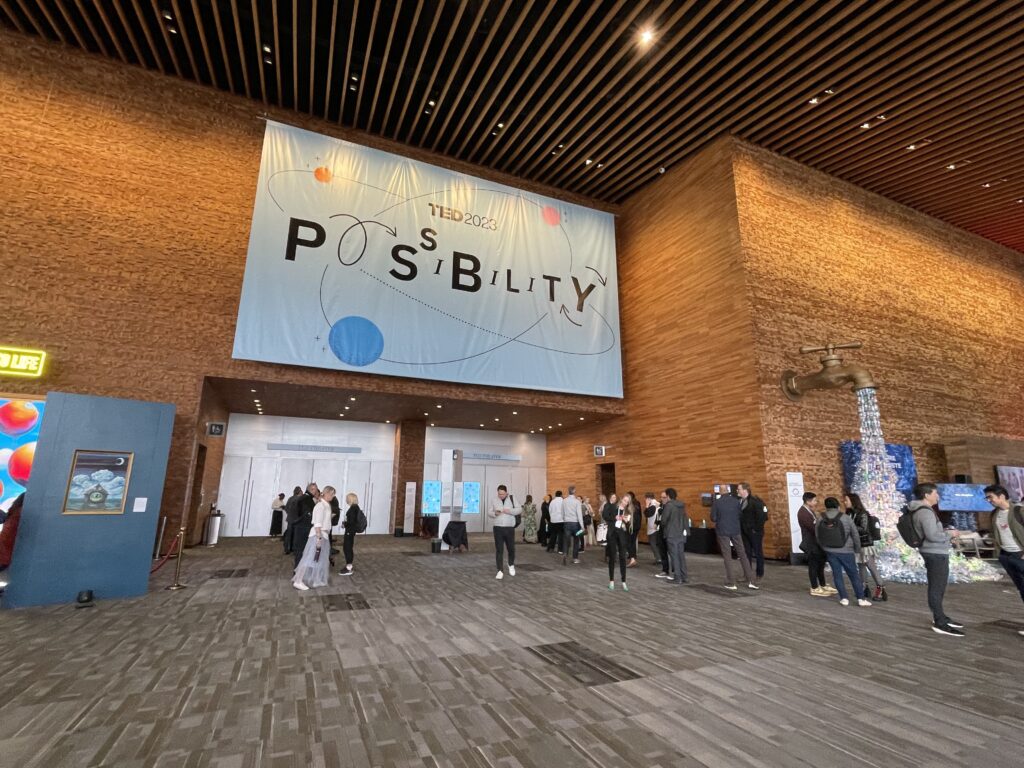
TED2023: Possibility
Held at the Vancouver Convention Centre, the theme of TED 2023 is ‘Possibility’, with a major focus on the possibility and impact of artificial intelligence technology, which was featured in many talks, exhibits and discussions. The five-day programme was packed with 12 two-hour talk sessions in the main theatre; workshop sessions; exhibits, demonstrations, food and beverage, and networking opportunities in The Loop around the theatre; themed lunch and dinner sessions; as well as networking dinners/parties. The five-day event was fully packed from the first session at 8:45am until beyond 9:00pm with the social/dinners.
The centrepiece: the talks
The talks were the centrepiece which TED is known for. The talks happened in a temporary, purpose-built wooden auditorium structure beautifully designed and furnished with comfortable and well-designed furniture. The talks were not driven by slides – slides were only used sparingly as visual aid where necessary – but were focussed on the well-rehearsed, well-researched and meticulously crafted stories delivered by exceptional charisma and oratory skills of the speakers. Some presentations were illustrated with real time demonstration that created a sense of awe (eg live deep fake face- and voice-swapping), or a curious and strangely beautiful artistic performance that created a sense of wonder (eg Studio Drift’s ‘concrete box’ that floated above the audience). At times, there were multimedia musical interludes (eg live singing performance with the accompaniment of an AI-enabled musical instrument). On two occasions, the audience even participated in singing performances! The design of the theatre experience represented the epidemy of intellect, impact, theatrical showmanship as well as production value.
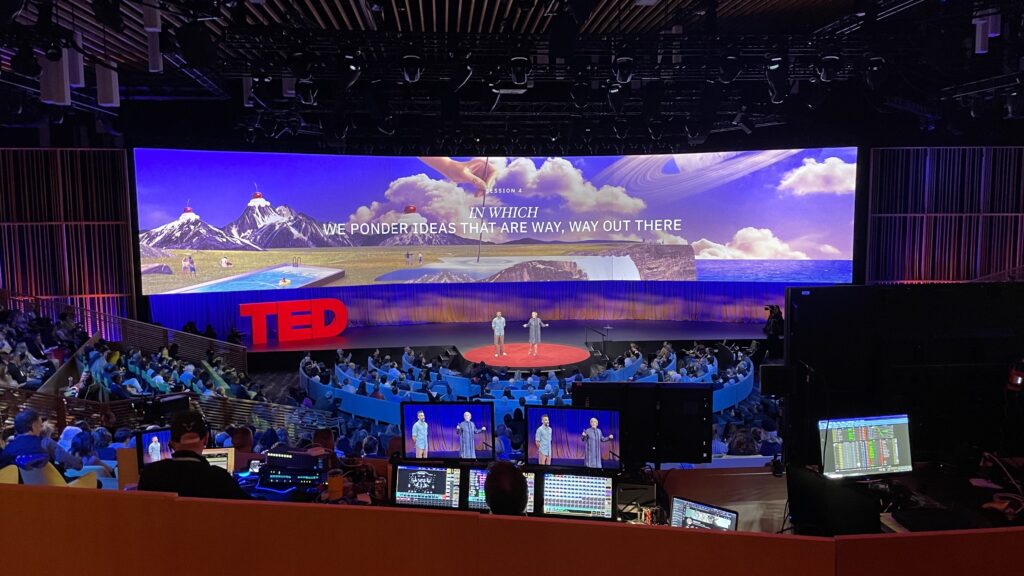

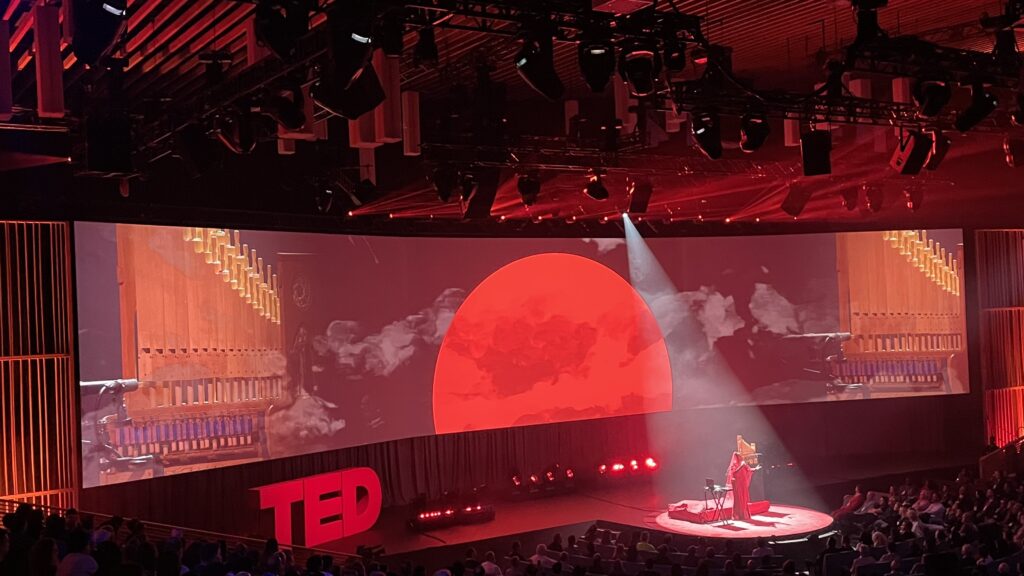
The 12 two-hour talk sessions were dispersed over five days with breaks in between with other scheduled activities. This demonstrates good programme design, with only one track of talks so that the delegates can see all of the talks if desired, and allowing the audience to rest, network and reflect and participate in other types of activities. I attended all sessions, totalling around 79 talks, and made copious notes. The talks were grouped into sessions that were loosely themed, eg sustainability, artificial intelligence, imagination, new global realities, AI creativity, etc. The talks were mostly 18 minutes in length (give or take), but there were also some short talks given by delegates that were selected through submitting a video proposal before the conference. In session 12, there was a ‘town hall’ session where members of the audience were given an opportunity to go on stage to provide responses or rebuttals to the talks. The final speaker was a stand-up comedian who gave an entertaining yet informative round-up of most of the talks.
The general format of TED talks can be summarised as such:
- Start with a story, the best ones would be from personal experience
- Use statistics, facts or real-life situations to establish context
- What has been done or what needs to be done, a call to action
- One central takeaway that is very memorable
This format coincides with the three elements to persuasion in Aristotle’s Art of Rhetoric: logos (logic and reasoning), pathos (emotional appeal) and ethos (character and credibility).
One interesting observation was that several speakers, due to tremendous stage fright, forgot what they had to say. Overcame with nerves, they paused mid-sentence on stage at a loss for words. The TED audience, being an extremely friendly and encouraging crowed, heart-warmingly cheered them on. They took deep breaths, revisited the script, had a drink of water, gathered themselves then picked up where they left off. I can only imagine how much stress that must have been. It was these moments that made the TED stage a human one.
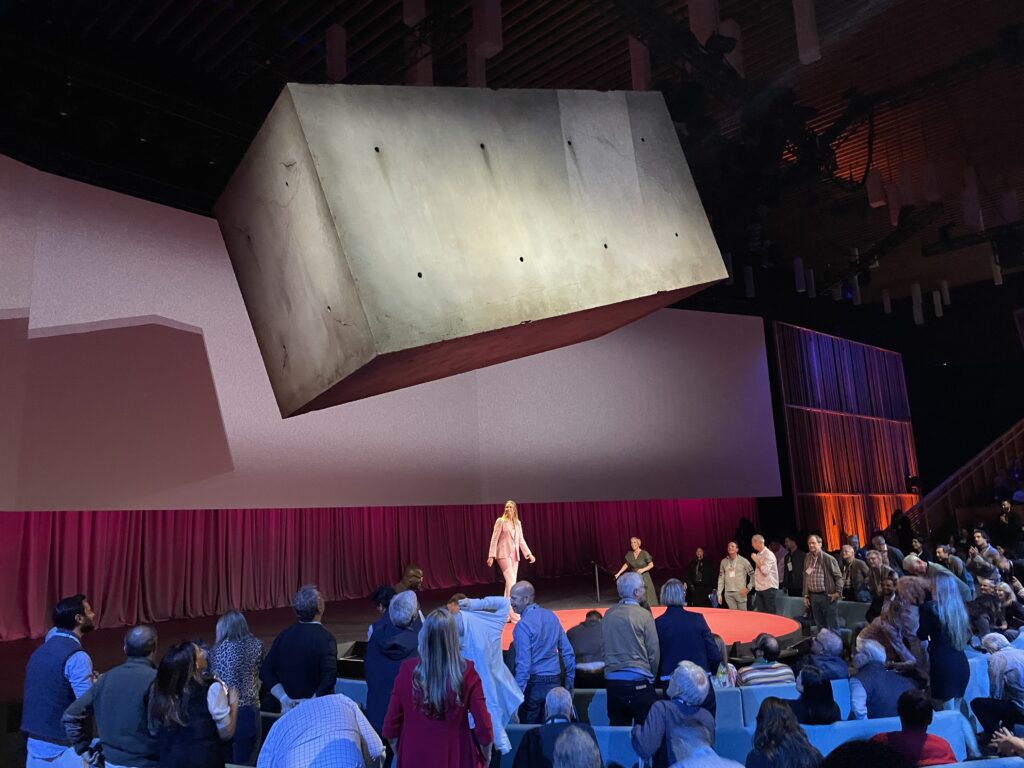

The Loop
In the area surrounding the TED Theatre, there were different themed areas including a book shop, an AI art installation, VR demonstration, EEG demonstration, an immersive gaming station, a vinyl record listening station, a ‘quiet room’ that shows an immersive video of a forest, as well as F&B and areas where delegates can comfortably sit and watch a livestream of the talks, network, or work quietly. Catering is provided buffet style, but there were also local food trucks that drove into the open area of the convention centre, creating a casual and street-like atmosphere.
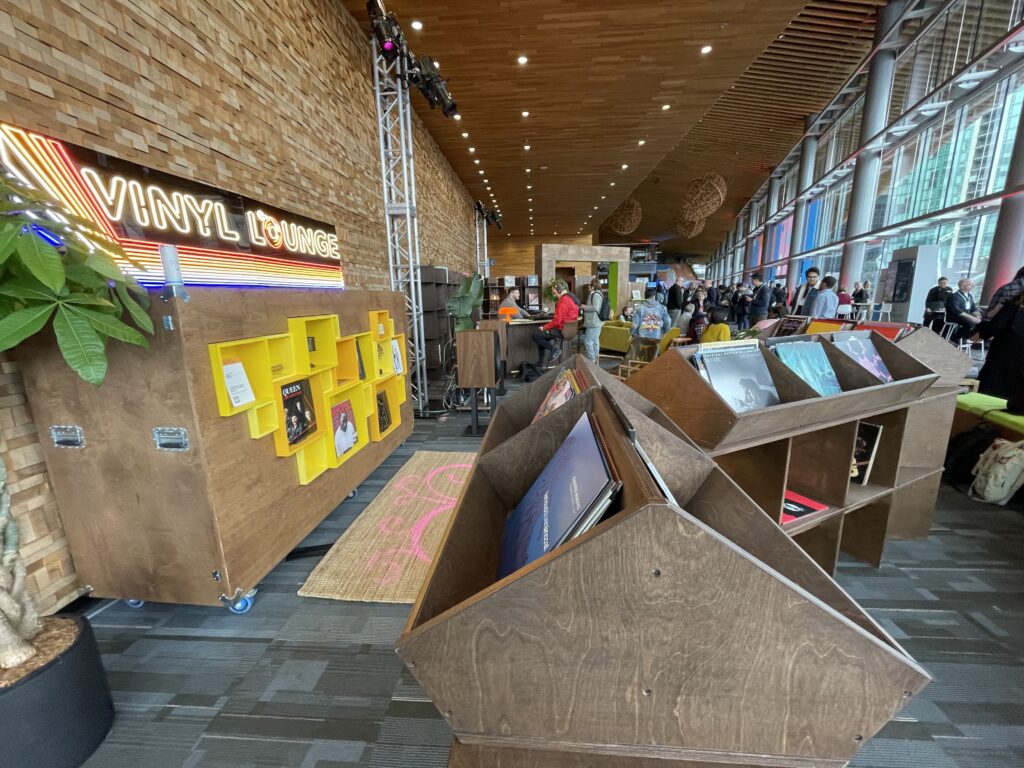
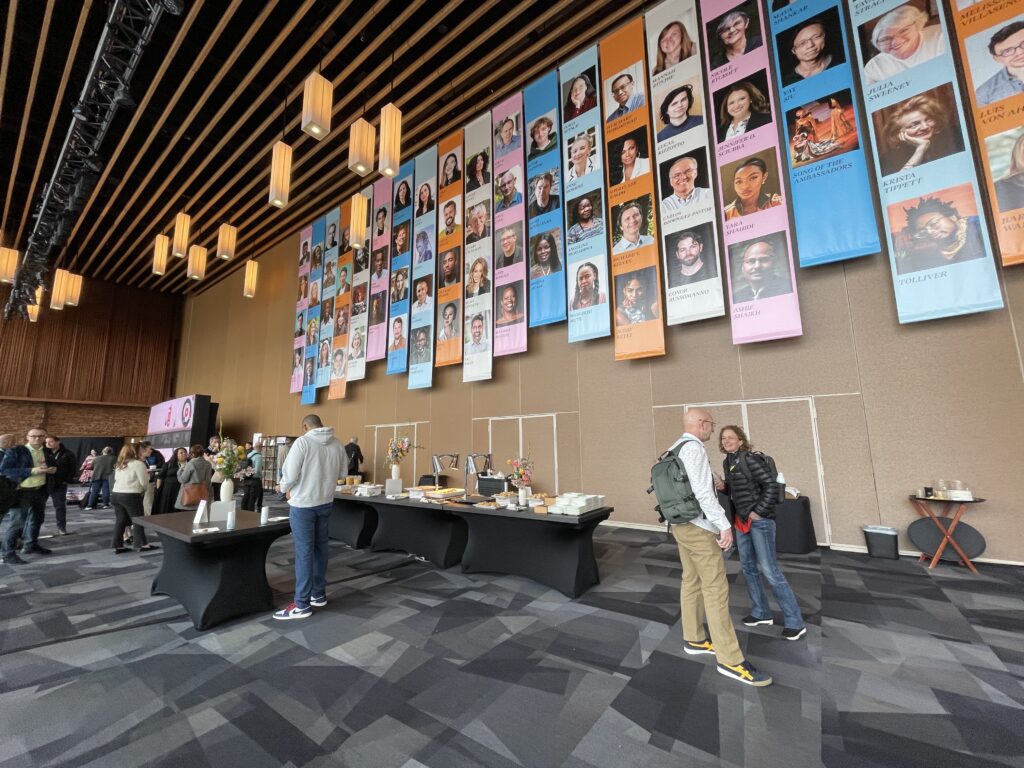
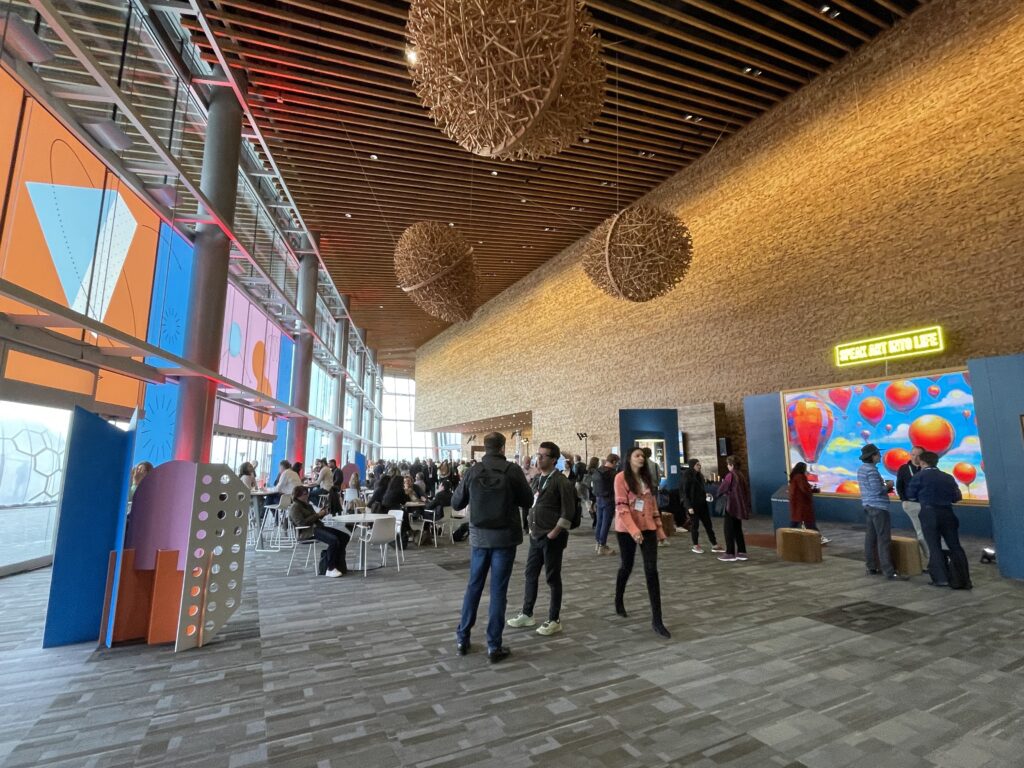
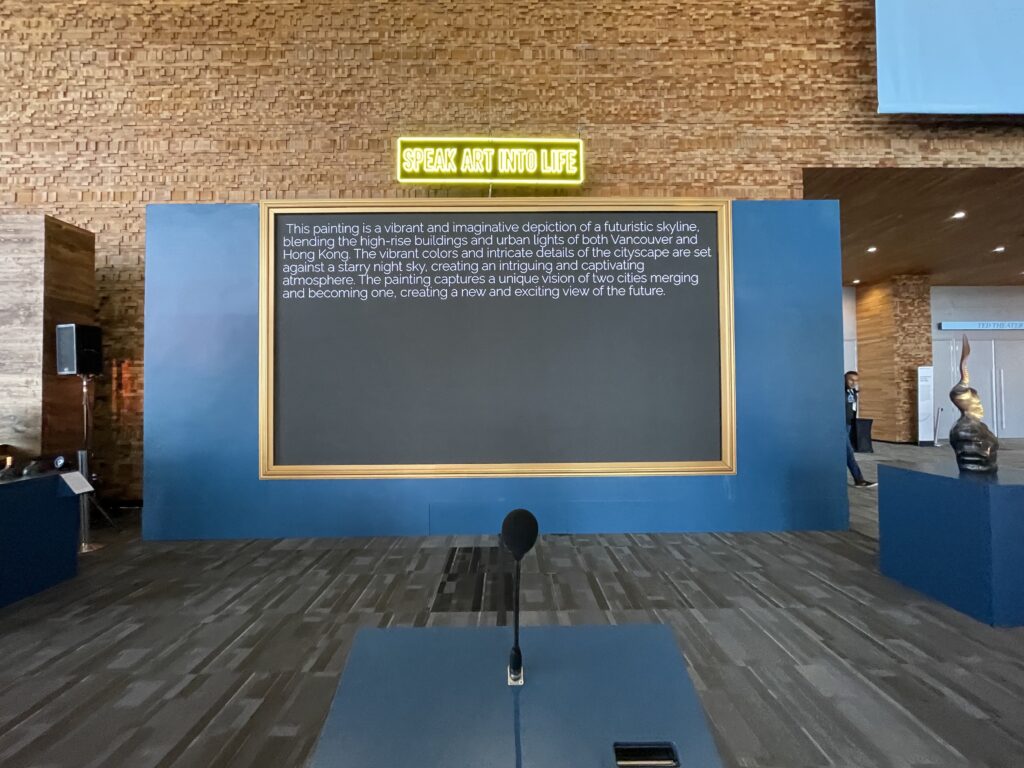
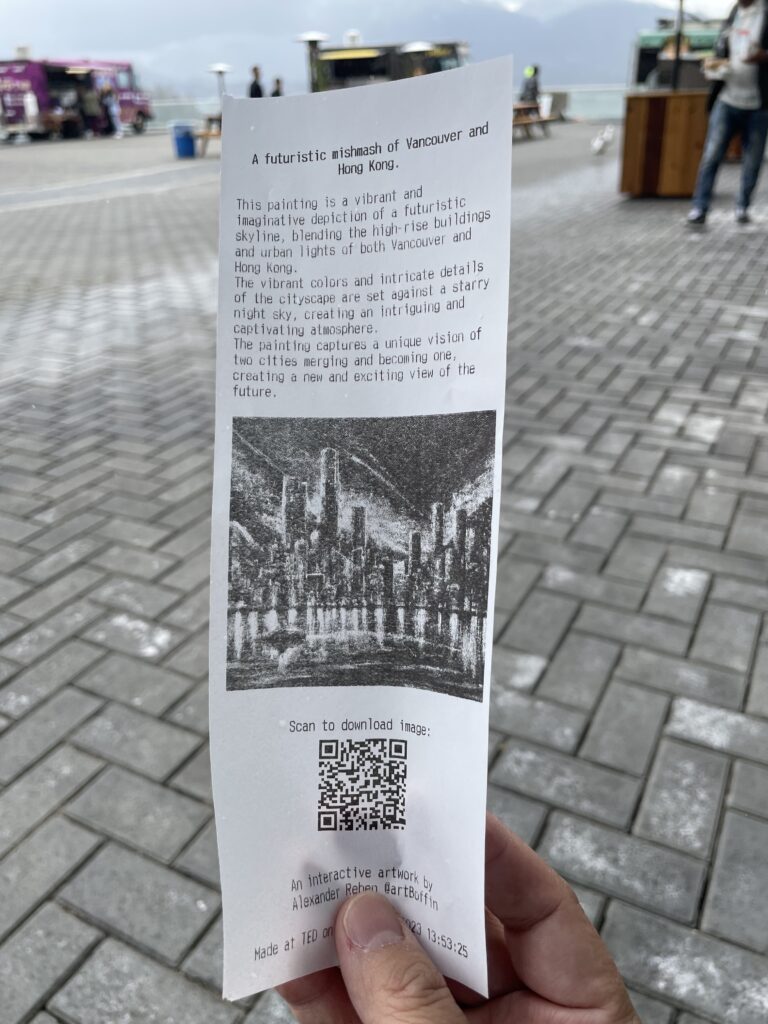

Workshops and other sessions
Workshops were scheduled between the TED Theatre (talk) sessions. I participated in a workshop on natural dyes, a panel discussion on web3, a panel discussion on AI, an inspiring lunch session with conductor Benjamin Zander talking about the art of possibility, as well as a dinner session with the theme of leadership.
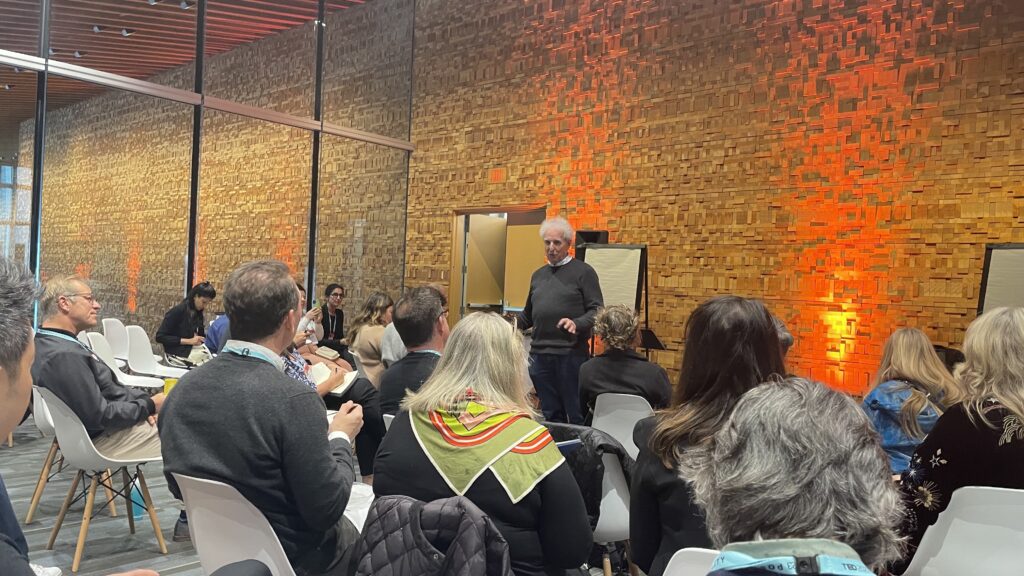
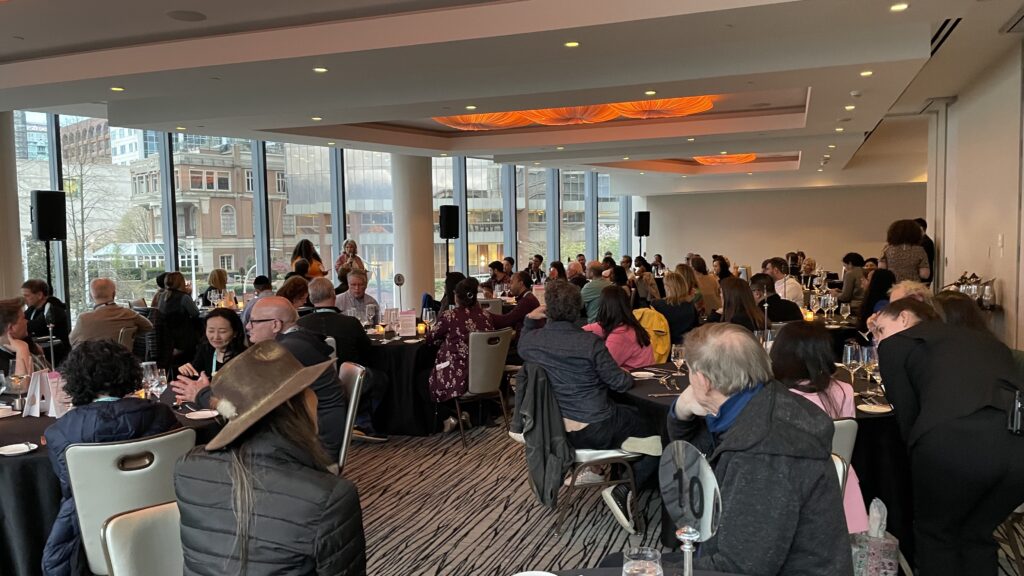

Networking and social events
Unlike previous industry/academic conference that I had been to, TED attracts an extremely diverse audience, both in terms of industries and countries. The TED Connect app made it handy to connect both speakers and delegates, with a full directory of all attendees (around 1,800 in total), a detailed, personalised conference schedule, a location map (a tag is attached to the conference lanyard to track attendee’s location in the venue), as well as instant messaging with other delegates. Contact information can be exchanged by tapping the RFID-equipped name tag using the TED Connect app, making the exchange of business cards redundant. I made 42 direct connections and added them to my network. I met delegates from Canada, the US, Austria, India, South Sudan, the UK, and Australia, from such diverse industries as telecommunication, corporate training, product safety, healthcare, legal practice, journalism, vaccine development, etc. This diversity made for rich conversations on topics that are outside of my own discipline and culture, widening my perspectives. There were plenty of opportunities to network and socialise, in between sessions, at lunch/dinners and at parties. The TED crowd is extremely friendly and open to connections and conversations. The culture is liberal and open.
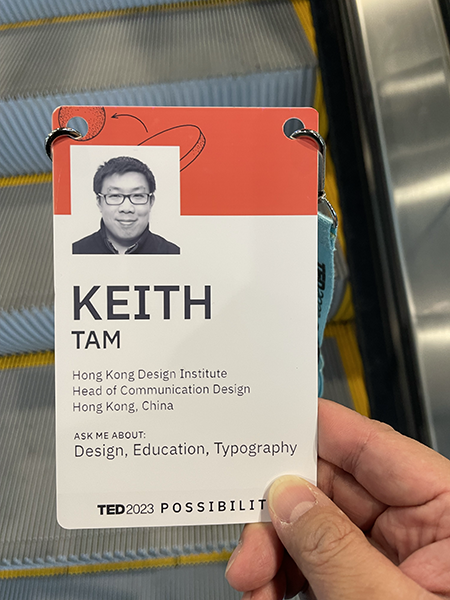

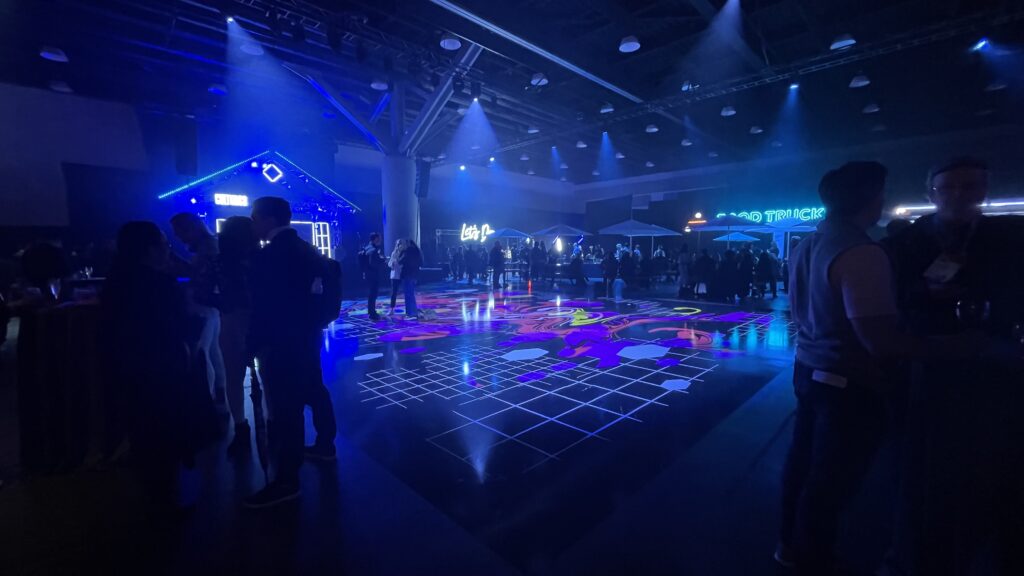
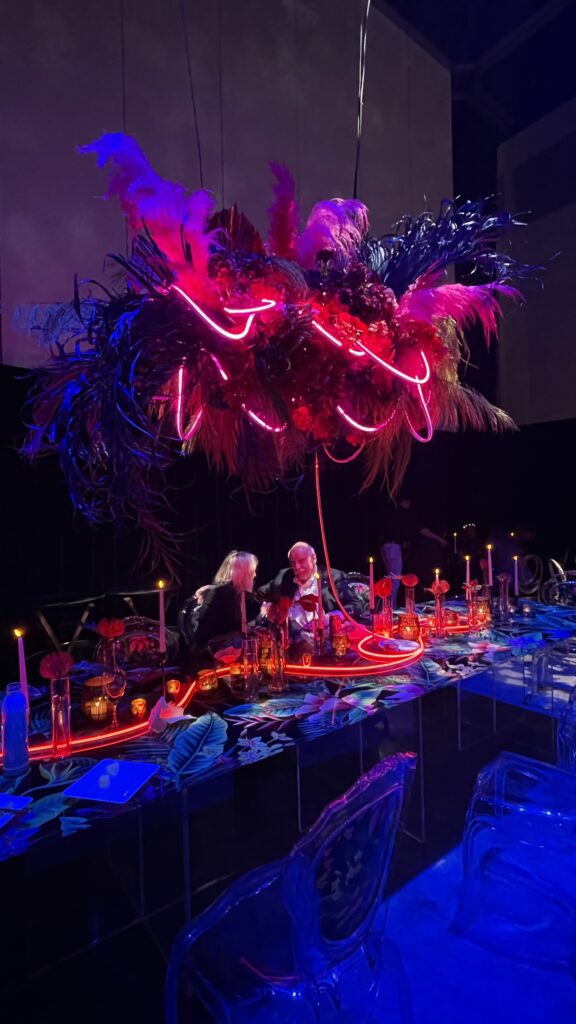
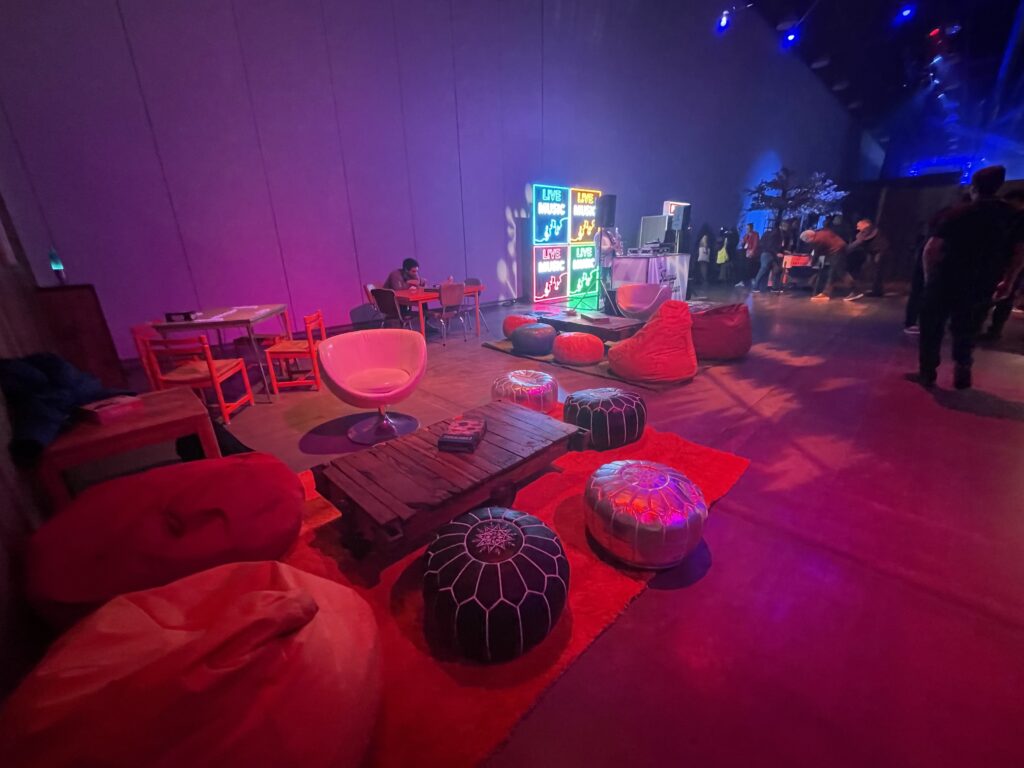
Reflections
The TED conference has been a truly inspiring and eye-opening experience. The programme did not provide me with what we traditionally call hard skills and industrial knowledge, but more importantly widening my perspective and mindset to think more globally about our impact as designers and global citizens. The experience highlighted the importance for contemporary, future-oriented designers to develop a curiosity and willingness to develop their breadth of knowledge and interests and reach out to as many knowledge domains as possible, so that we can truly make a difference in the world as design practitioners.
The TED experience also highlighted the importance of good storytelling for disseminating knowledge and ideas, and its role in advocacy on issues that are of global concern.
One epiphany from the TED experience for me as a designer and academic leader is this: if we want to become a centre of excellence in design education, we must abandon the imaginary boundaries of the traditional ‘object-based’ disciplines of design to an integrated approach that is planet-centred, humanity-centred, and human-centred, and continue to work with other disciplines for the collective good. There are urgent issues in the world that need to be addressed. We should think beyond simply subscribing to a model that design feeds desires and serves commerce (the traditional ‘star designer’ model).
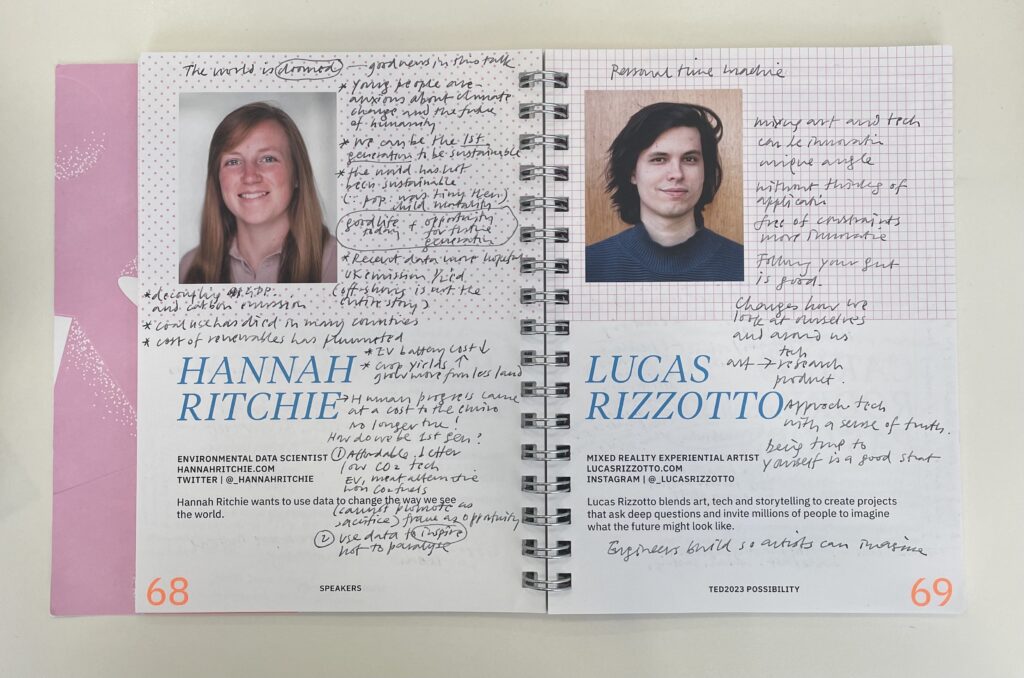
Follow-up actions
- Apply for a license to run TEDx at HKDI (with an audience size of over 100 with webcast)
- Set up a TEDxHKDI working group under DILWL’s LTDC
- Plan and implement a series of TEDx ‘salon’ events that lead up to a full-scale TEDx. Tentative timeline: salons in September–November 2023, full TEDx in February 2024
- Identify relevant potential topics/issues that are of global significance to focus on as projects at HKDI
- Incorporate the idea of ‘widening perspectives’ and ‘kindling curiosity’ into learning and teaching activities, curriculum, and campus culture